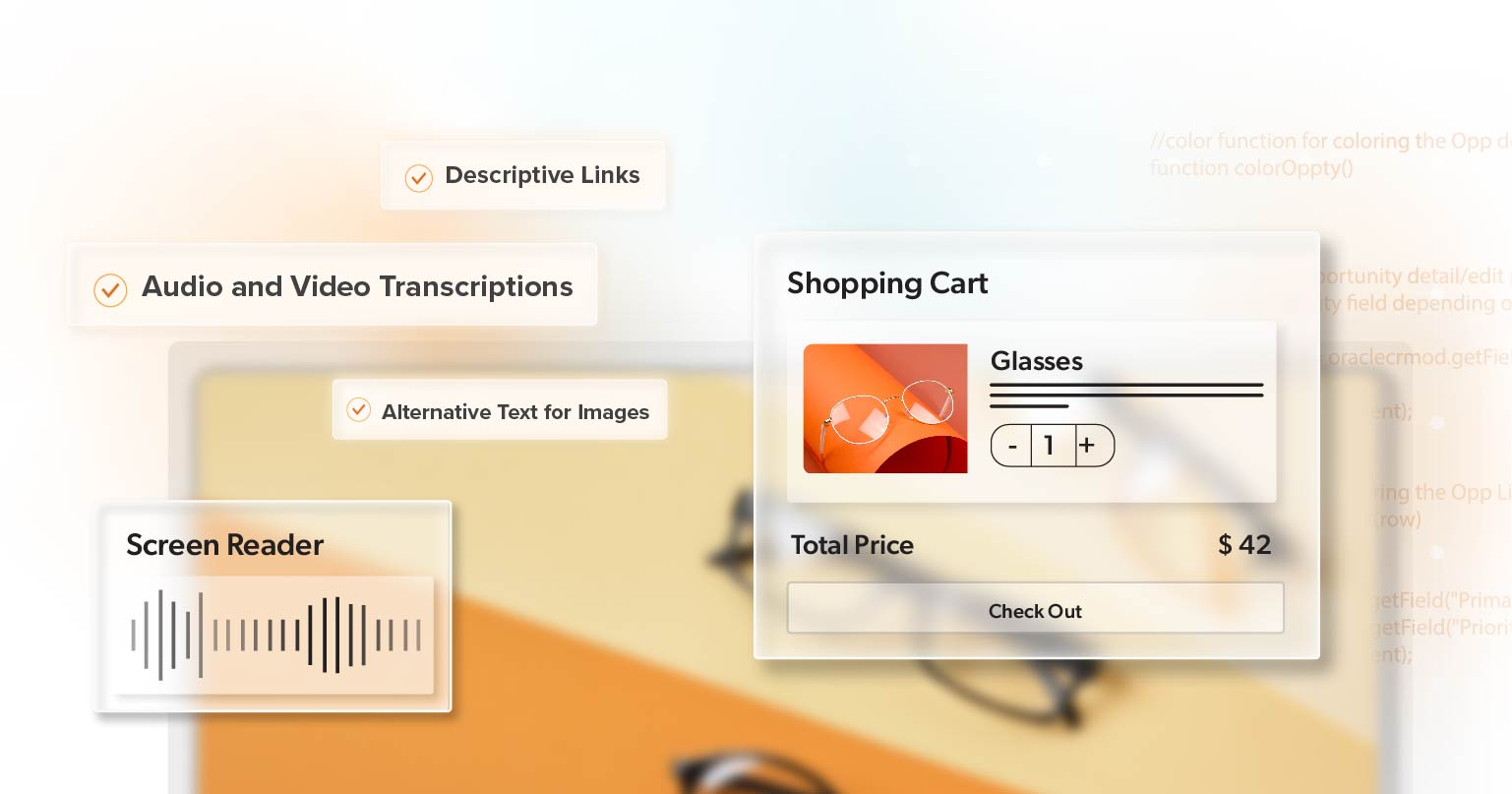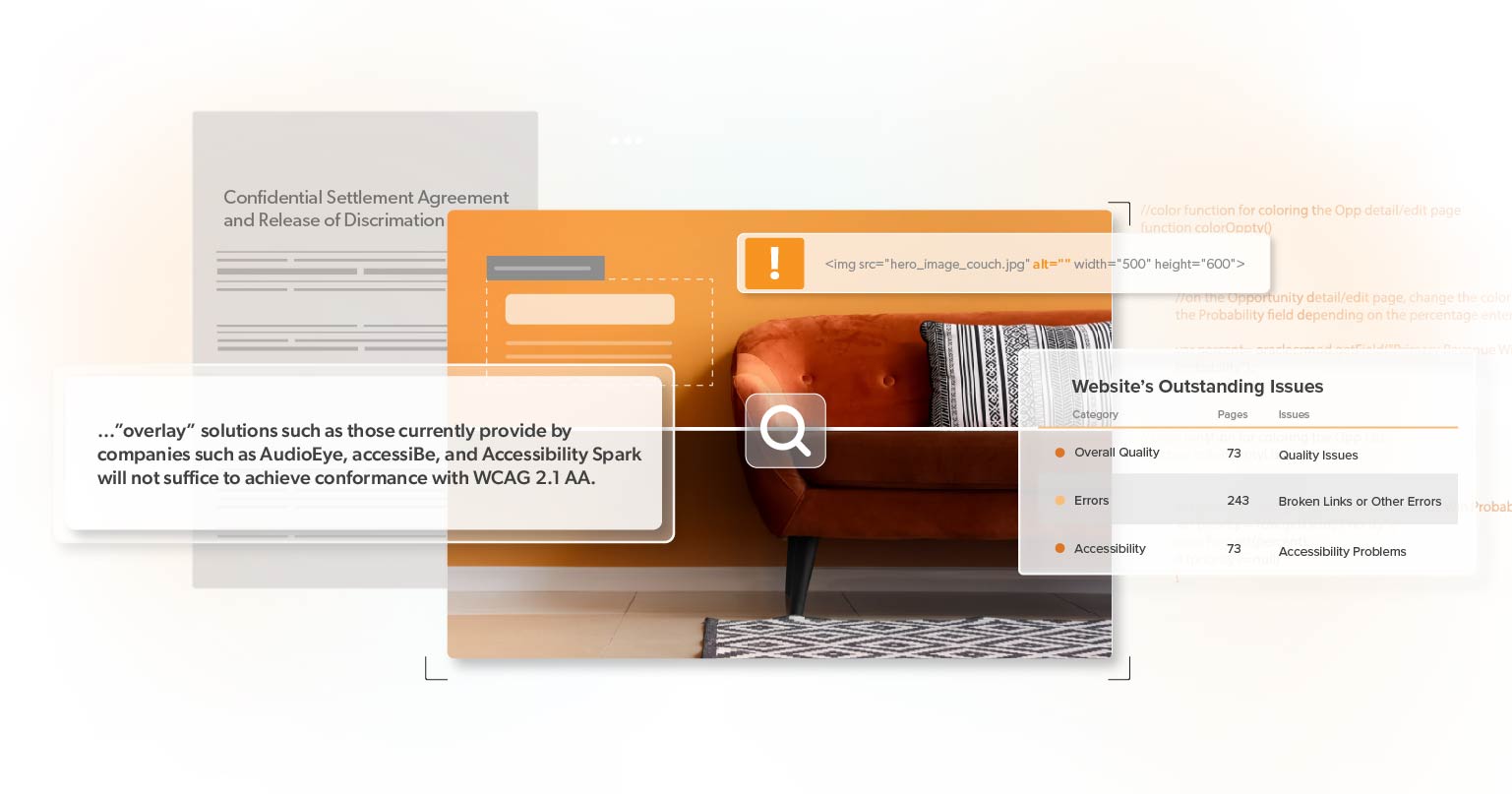In today’s digital age, making your website accessible to everyone is more important than ever. One critical aspect of digital accessibility is ensuring that your site is compatible with screen readers. But what exactly are screen readers, and why is it so important to make sure your website works well with them? In this blog post, we’ll dive into what screen readers are, who uses them, how they browse the Internet, and how you can test your website to ensure it’s screen reader-friendly.
What are Screen Readers and Who Uses Them?
Let’s start with the basics. A screen reader is a piece of software that reads aloud the text displayed on a computer or mobile device screen. It’s a vital tool for people who are blind or have severe visual impairments. However, screen readers are also used by individuals with other disabilities, such as those with learning disabilities or certain cognitive impairments, who may find it easier to listen to content rather than read it.
So, who exactly uses screen readers? The answer is billions of people around the world. In the United States alone, there are an estimated 12 million people over 40 with a visual disability. For these individuals, screen readers are essential for accessing the Internet, working, and communicating. Without screen readers, many websites would be entirely inaccessible to them.
How Do Screen Reader Users Browse the Internet?
Browsing the Internet with a screen reader is a completely different experience than browsing with sight. For starters, screen reader users don’t navigate web pages visually—they rely on audio cues and keyboard commands to get around.
Here’s a simplified version of how it works:
- Screen Reader Starts Reading: When a screen reader user opens a webpage, the screen reader begins reading the content from top to bottom. It reads out the text, describes images (if alt text is provided), and announces the presence of links, buttons, and other interactive elements.
- Keyboard Navigation: Instead of using a mouse, screen reader users navigate through the website using keyboard commands. They might use the Tab key to move between links, headings, and form fields, or shortcuts to jump to specific sections of the page, such as the main content or a list of links.
- Listening for Context: Screen reader users often listen to the content at a much faster speed than normal. They also rely heavily on headings, landmarks, and other structural elements to understand the layout and flow of the page. For example, a user might jump from heading to heading to quickly scan the page and find the information they need.
- Interacting with Elements: When a user encounters a form field, button, or link, the screen reader announces what it is and sometimes gives instructions on how to interact with it. For example, if there’s a “Submit” button, the screen reader might say, “Button: Submit. Press Enter to activate.”
For screen reader users, a well-structured, accessible website is key to having a smooth and efficient browsing experience. But if a website is not properly optimized for screen readers, it can become frustrating, confusing, or even impossible to use.
Why is Screen Reader Testing Important?
Now that you have a basic understanding of what screen readers are and how they’re used, let’s talk about why testing your website for screen reader compatibility is so important.
Ensuring Digital Accessibility
First and foremost, screen reader testing is crucial for ensuring digital accessibility. As a website owner, developer, or content creator, it’s your responsibility to make sure that your website is accessible to everyone, including people with disabilities. Screen reader testing helps you identify and fix issues that could prevent people who rely on these tools from accessing your content.
Complying with Legal Requirements
In the United States, websites are required by law to be accessible to people with disabilities. The Americans with Disabilities Act (ADA) Title II and Section 508 of the Rehabilitation Act are two key laws that apply to web accessibility. If your website is not accessible, you could be at risk of legal action, which could result in costly fines and damage to your reputation. By performing screen reader testing, you can ensure that your website complies with these laws.
Improving User Experience
Accessibility isn’t just about legal compliance—it’s also about providing a better user experience for everyone. When your website is accessible to screen reader users, it’s also likely to be more user-friendly for other visitors. For example, clear headings, logical page structure, and well-labeled buttons benefit all users, not just those with disabilities.
Reaching a Wider Audience
By making your website accessible to screen reader users, you’re opening it up to a wider audience. This can lead to more traffic, better SEO, and ultimately, more success for your business. Accessibility should be seen as an investment in your website’s future, not just a legal obligation.
What Are the Different Approaches to Accessibility Testing?
There are several different approaches to accessibility testing, each with its own advantages and disadvantages. To ensure that your website is fully accessible, it’s important to use a combination of these methods.
Automated Testing
Automated testing tools can scan your website for common accessibility issues, such as missing alt text, insufficient color contrast, and incorrect HTML structure. These tools are fast and can cover a lot of ground in a short amount of time. However, they can’t catch every issue—especially those related to screen reader compatibility.
Some popular automated accessibility testing tools include:
- WAVE: A web accessibility evaluation tool that highlights accessibility issues directly on your webpage.
- Lighthouse: A tool built into Chrome that can audit your website for performance, SEO, and accessibility issues.
While automated testing is a great starting point, it should never be the only method you use. Automated testing covers only 30-40% of accessibility guidelines and can miss more subtle or complex problems that require human judgment.
Manual Testing
Manual testing involves a human tester navigating your website and checking for accessibility issues. This approach is essential for catching issues that automated tools might miss, such as how well your website works with a screen reader. Manual testing can be more time-consuming and requires a deeper understanding of web accessibility, but it provides a more accurate picture of your website’s accessibility.
During manual testing, you should:
- Check Keyboard Navigation: Ensure that all interactive elements, such as links, buttons, and form fields, can be accessed and activated using only the keyboard.
- Test with a Screen Reader: Use a screen reader to navigate your website and listen to how the content is announced. Pay attention to whether the screen reader correctly identifies headings, lists, buttons, and other elements.
User Testing
User testing involves real users with disabilities testing your website and providing feedback on their experience. This is the most effective way to identify and fix accessibility issues, as it provides insight into how your website works in the real world.
To conduct user testing:
- Recruit Testers: Find users who rely on screen readers and other assistive technologies to test your website. You can reach out to local organizations, online communities, or professional networks to find willing participants.
- Observe and Take Notes: Watch how the testers interact with your website and take note of any issues they encounter. Pay attention to their feedback and use it to make improvements.
- Iterate and Improve: After making changes based on user feedback, test again to ensure that the issues have been resolved.
User testing can be more expensive and time-consuming than other methods, but it provides the most valuable insights.
Not sure what form of accessibility testing is right for you? Check out our article, Choosing the Right Accessibility Audit for Your Goals, for more information.
How to Perform Screen Reader Testing
Screen reader testing is a crucial part of manual and user testing. Here’s a step-by-step guide to performing screen reader testing on your website.
Choose Your Screen Readers
There are several different screen readers available, each with its own unique features and quirks. The most commonly used screen readers in the United States are:
To ensure that your website is accessible to the widest audience possible, it’s important to test with more than one screen reader.
Familiarize Yourself with Screen Reader Commands
Screen readers are controlled through a series of keyboard commands. Before you start testing, take some time to familiarize yourself with the basic commands for the screen reader you’re using. Most screen readers have a “practice mode” where you can learn and try out different commands.
For example, in NVDA, you can press Ctrl + Alt + N to start the screen reader, use the Tab key to move through links and buttons, and press H to jump between headings.
Navigate Your Website
Start by opening your website with the screen reader turned on. Listen to how the screen reader announces the content, and use keyboard commands to navigate through the site. Pay attention to the following:
- Headings: Are they announced correctly? Do they provide a clear structure for the page?
- Links and Buttons: Are they labeled correctly? Do they make sense out of context?
- Forms: Are the form fields and labels announced clearly? Is it easy to fill out the form using only the keyboard?
Identify and Fix Issues
As you navigate your website, take note of any issues you encounter. For example, if the screen reader doesn’t announce a button’s label, it may be missing an aria-label attribute. If a heading is skipped, it might be due to incorrect HTML markup.
Once you’ve identified the issues, go back and fix them in your website’s code. Then, test again to ensure that the problem has been resolved.
Test on Different Devices
Screen reader behavior can vary depending on the device and browser being used. After testing on your primary device, try testing on different devices and browsers to ensure a consistent experience for all users.
Conclusion
In today’s world, making your website accessible to everyone isn’t just a nice-to-have—it’s a must-do. Ensuring your site works smoothly with screen readers is a big part of that. By taking the time to test and optimize your website for screen readers, you’re not only complying with legal requirements but also creating a better experience for all users. Plus, you’re opening the doors to a wider audience, which is always good for business.
If you’re ready to take the next step in making your website truly accessible, why not schedule a complimentary ADA Strategy Briefing with 216digital? We’re here to help you navigate the ins and outs of digital accessibility and ensure your site is welcoming to everyone. Let’s make the web a better place, one website at a time.








